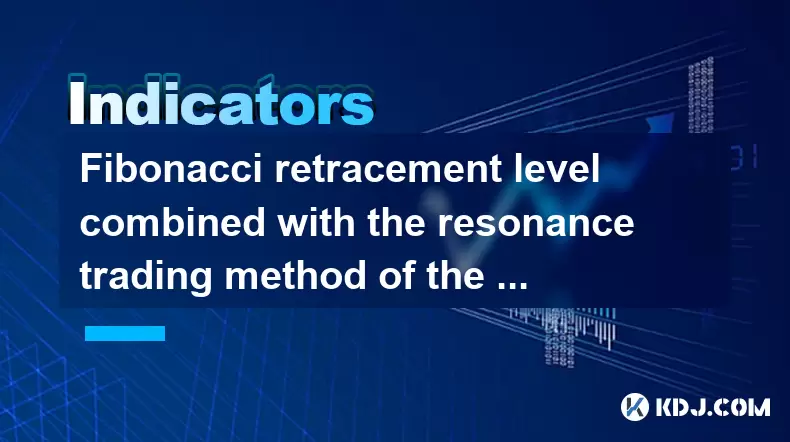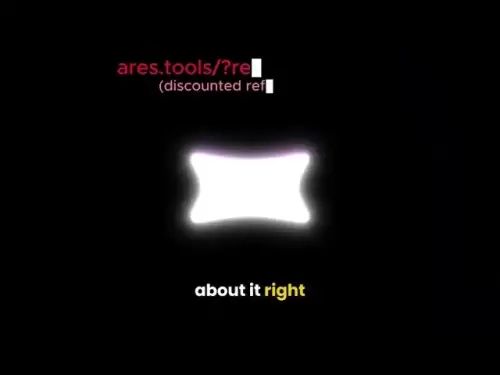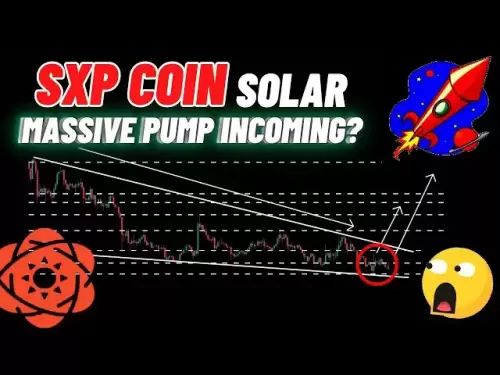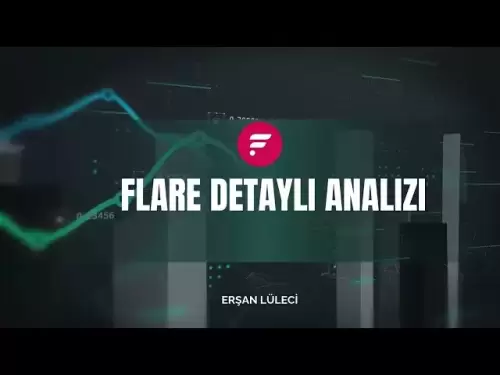-
 Bitcoin
Bitcoin $117500
2.04% -
 Ethereum
Ethereum $3759
3.02% -
 XRP
XRP $3.171
3.30% -
 Tether USDt
Tether USDt $1.000
0.03% -
 BNB
BNB $782.4
2.52% -
 Solana
Solana $187.2
5.62% -
 USDC
USDC $0.0000
0.02% -
 Dogecoin
Dogecoin $0.2380
5.26% -
 TRON
TRON $0.3175
1.07% -
 Cardano
Cardano $0.8227
4.03% -
 Hyperliquid
Hyperliquid $44.50
5.44% -
 Sui
Sui $4.020
10.07% -
 Stellar
Stellar $0.4396
6.28% -
 Chainlink
Chainlink $18.32
4.55% -
 Hedera
Hedera $0.2628
10.71% -
 Bitcoin Cash
Bitcoin Cash $554.8
4.90% -
 Avalanche
Avalanche $24.20
4.60% -
 Litecoin
Litecoin $113.7
2.31% -
 Shiba Inu
Shiba Inu $0.00001413
5.99% -
 UNUS SED LEO
UNUS SED LEO $8.984
0.11% -
 Toncoin
Toncoin $3.326
7.22% -
 Ethena USDe
Ethena USDe $1.001
0.00% -
 Uniswap
Uniswap $10.49
4.56% -
 Polkadot
Polkadot $4.092
4.02% -
 Monero
Monero $326.6
1.30% -
 Dai
Dai $1.000
-0.01% -
 Bitget Token
Bitget Token $4.570
2.49% -
 Pepe
Pepe $0.00001267
5.10% -
 Aave
Aave $297.3
3.10% -
 Cronos
Cronos $0.1344
4.10%
Fibonacci retracement level combined with the resonance trading method of the moving average
Fibonacci retracement levels like 61.8% combined with moving average convergence create high-probability trade zones in crypto markets.
Jul 26, 2025 at 07:14 am

Understanding Fibonacci Retracement in Cryptocurrency Trading
Fibonacci retracement levels are widely used tools in technical analysis, especially within the cryptocurrency market, where price movements can be highly volatile. These levels are derived from the Fibonacci sequence, a mathematical series where each number is the sum of the two preceding ones. In trading, the key retracement levels are 23.6%, 38.2%, 50%, 61.8%, and 78.6%. These percentages represent potential zones where the price may pause or reverse after a significant move.
To apply Fibonacci retracement, traders first identify a clear swing high and swing low on a price chart. Once these points are marked, the tool automatically draws horizontal lines at the key Fibonacci percentages. These lines act as support and resistance zones. For example, if Bitcoin rises from $30,000 to $40,000, the retracement levels would indicate where the price might find support during a pullback. Traders watch these levels closely for signs of price rejection or consolidation, which can signal potential entry or exit points.
It’s important to note that Fibonacci levels are not exact predictors but rather probabilistic zones. Their effectiveness increases when combined with other technical indicators, such as moving averages, volume, or candlestick patterns. This brings us to a more advanced strategy: combining Fibonacci retracement with moving average resonance.
The Role of Moving Averages in Identifying Market Trends
Moving averages (MAs) smooth out price data over a specified period, helping traders identify the direction of the trend. The two most commonly used types are the Simple Moving Average (SMA) and the Exponential Moving Average (EMA). The EMA gives more weight to recent prices, making it more responsive to new information, which is crucial in fast-moving crypto markets.
Traders often use multiple moving averages simultaneously. For instance, a combination of the 50-period EMA and 200-period EMA can help determine the strength and direction of a trend. When the 50 EMA crosses above the 200 EMA, it’s known as a "golden cross", signaling a potential bullish trend. Conversely, a "death cross" occurs when the 50 EMA falls below the 200 EMA, indicating bearish momentum.
The concept of resonance in this context refers to the alignment or clustering of multiple moving averages around the same price zone. When several MAs converge near a Fibonacci retracement level, it creates a high-probability area for price reaction. This convergence increases the significance of that zone, as it combines both trend-following and reversal signals.
How Fibonacci and Moving Averages Create Resonance Zones
The power of combining Fibonacci retracement with moving average resonance lies in the confluence of support/resistance and trend confirmation. When a Fibonacci level coincides with a cluster of moving averages, the likelihood of a price reaction increases significantly.
To identify such zones, follow these steps:
- Select a recent significant price swing (high to low or low to high) on a cryptocurrency chart, such as Ethereum or Binance Coin.
- Apply the Fibonacci retracement tool from the swing point.
- Overlay multiple moving averages, such as the 20 EMA, 50 SMA, and 100 EMA, on the same chart.
- Observe where any of the Fibonacci levels intersect or come close to the moving averages.
For example, if the 61.8% Fibonacci retracement level aligns closely with the 50 SMA and 100 EMA, this area becomes a strong resonance zone. Traders may look for bullish candlestick patterns like hammer or bullish engulfing near this zone in an uptrend, or bearish patterns like shooting star or dark cloud cover in a downtrend.
This method works particularly well on higher timeframes like the 4-hour or daily charts, where false signals are less frequent. The alignment of technical tools increases the confidence level in trade setups, reducing reliance on guesswork.
Executing Trades Using the Combined Strategy
To execute a trade using the Fibonacci and moving average resonance method, precision in entry, stop-loss, and take-profit placement is essential.
Consider this scenario on a Bitcoin 4-hour chart:
- Price has risen from $28,000 to $36,000 and begins to retrace.
- The 61.8% Fibonacci level sits at $31,200.
- At the same price level, the 50 SMA and 100 EMA are converging.
- Volume decreases as price approaches this zone, indicating weakening selling pressure.
- A bullish pin bar forms at $31,200, closing above the moving averages.
In this case, a long trade can be initiated with the following parameters:
- Entry: Just above the high of the bullish pin bar, around $31,350.
- Stop-loss: Placed below the 78.6% Fibonacci level, say $30,800, to account for volatility.
- Take-profit: Set at the previous swing high ($36,000) or use a 1.5x or 2x risk-reward ratio.
It’s crucial to wait for candlestick confirmation before entering. Entering prematurely can lead to losses if the price continues to drop. Additionally, monitoring on-chain data or order book depth can provide supplementary confirmation, though this is optional.
Managing Risk and Avoiding False Signals
No strategy is foolproof, and false breakouts are common in cryptocurrency trading. To mitigate risk when using the Fibonacci and moving average resonance method, traders should apply strict risk management rules.
Key practices include:
- Never risk more than 1-2% of trading capital on a single trade.
- Use tight stop-loss orders based on recent price structure, not arbitrary levels.
- Confirm the overall market trend using higher timeframe analysis. For example, if the daily chart shows a strong uptrend, only take long setups on lower timeframes.
- Avoid trading during low-liquidity periods or major news events, as volatility can trigger stop-losses unexpectedly.
Another common pitfall is overloading the chart with too many indicators. Stick to 2-3 moving averages and one Fibonacci retracement tool to keep the chart clean and readable. Overcomplication leads to confusion and poor decision-making.
Frequently Asked Questions
What timeframes work best for combining Fibonacci and moving average resonance?
The 4-hour and daily charts are optimal for this strategy. These timeframes reduce market noise and increase the reliability of confluence zones. Lower timeframes like 5-minute or 15-minute charts generate too many false signals due to volatility.
Can this strategy be automated using trading bots?
Yes, but with limitations. Bots can be programmed to detect Fibonacci levels and moving average crossovers, but they may struggle with candlestick pattern recognition and context-based decisions. Manual oversight is recommended, especially during high-impact news events.
How do I adjust the moving averages for different cryptocurrencies?
The standard settings (20, 50, 100, 200) work well across most major cryptos like Bitcoin and Ethereum. For more volatile altcoins, consider using shorter periods, such as 10 EMA and 21 EMA, to stay responsive to rapid price changes.
Is the 50% Fibonacci level valid even though it’s not a Fibonacci ratio?
Although 50% is not derived from the Fibonacci sequence, it is widely respected by traders due to psychological significance. It often acts as a midpoint and frequently coincides with moving averages, making it a valid level in resonance strategies.
Disclaimer:info@kdj.com
The information provided is not trading advice. kdj.com does not assume any responsibility for any investments made based on the information provided in this article. Cryptocurrencies are highly volatile and it is highly recommended that you invest with caution after thorough research!
If you believe that the content used on this website infringes your copyright, please contact us immediately (info@kdj.com) and we will delete it promptly.
- Vaultz Capital's Bitcoin Bet: A Strategic Shift on the Aquis Exchange
- 2025-07-26 20:30:12
- Pi Coin, Wallet Features, and Coinbase: What's the Buzz?
- 2025-07-26 18:30:12
- Worldcoin, Punisher Coin, and the Meme Coin Mania: What's the Haps?
- 2025-07-26 18:30:12
- Conviction, Justice System, and Murders: A Look at Recent Cases and Shifting Perspectives
- 2025-07-26 18:50:11
- Shiba Inu, Remittix, and the Market Surge: What's the Hype?
- 2025-07-26 19:10:12
- Cardano Price, ADA Holders, and Leadership Criticism: What's the Real Deal?
- 2025-07-26 19:30:12
Related knowledge

What does it mean that the rebound is blocked after the moving average is arranged in a short position for the first time?
Jul 26,2025 at 10:51am
Understanding the Short-Term Moving Average ConfigurationWhen traders refer to a 'short position arrangement' in moving averages, they are describing ...

What does it mean that the parabolic indicator and the price break through the previous high at the same time?
Jul 26,2025 at 07:22pm
Understanding the Parabolic Indicator (SAR)The Parabolic SAR (Stop and Reverse) is a technical analysis tool developed by J. Welles Wilder to identify...

What does it mean when the price rises along the 5-day moving average for five consecutive days?
Jul 26,2025 at 08:07am
Understanding the 5-Day Moving Average in Cryptocurrency TradingThe 5-day moving average (5DMA) is a widely used technical indicator in cryptocurrency...

What does it mean when ADX breaks through 25 and +DI continues to rise?
Jul 26,2025 at 07:00pm
Understanding the ADX Indicator and Its ThresholdsThe Average Directional Index (ADX) is a technical analysis tool used to measure the strength of a t...

What does it mean when the price breaks through the 60-day moving average with a large volume but shrinks the next day?
Jul 26,2025 at 06:01am
Understanding the 60-Day Moving Average in Cryptocurrency TradingThe 60-day moving average (60DMA) is a widely used technical indicator in the cryptoc...

What does the sudden rise of ADX in DMI accompanied by +DI crossing -DI indicate?
Jul 26,2025 at 01:21pm
Understanding the DMI and Its Core ComponentsThe Directional Movement Index (DMI) is a technical analysis tool used to determine the presence and stre...

What does it mean that the rebound is blocked after the moving average is arranged in a short position for the first time?
Jul 26,2025 at 10:51am
Understanding the Short-Term Moving Average ConfigurationWhen traders refer to a 'short position arrangement' in moving averages, they are describing ...

What does it mean that the parabolic indicator and the price break through the previous high at the same time?
Jul 26,2025 at 07:22pm
Understanding the Parabolic Indicator (SAR)The Parabolic SAR (Stop and Reverse) is a technical analysis tool developed by J. Welles Wilder to identify...

What does it mean when the price rises along the 5-day moving average for five consecutive days?
Jul 26,2025 at 08:07am
Understanding the 5-Day Moving Average in Cryptocurrency TradingThe 5-day moving average (5DMA) is a widely used technical indicator in cryptocurrency...

What does it mean when ADX breaks through 25 and +DI continues to rise?
Jul 26,2025 at 07:00pm
Understanding the ADX Indicator and Its ThresholdsThe Average Directional Index (ADX) is a technical analysis tool used to measure the strength of a t...

What does it mean when the price breaks through the 60-day moving average with a large volume but shrinks the next day?
Jul 26,2025 at 06:01am
Understanding the 60-Day Moving Average in Cryptocurrency TradingThe 60-day moving average (60DMA) is a widely used technical indicator in the cryptoc...

What does the sudden rise of ADX in DMI accompanied by +DI crossing -DI indicate?
Jul 26,2025 at 01:21pm
Understanding the DMI and Its Core ComponentsThe Directional Movement Index (DMI) is a technical analysis tool used to determine the presence and stre...
See all articles

























































































